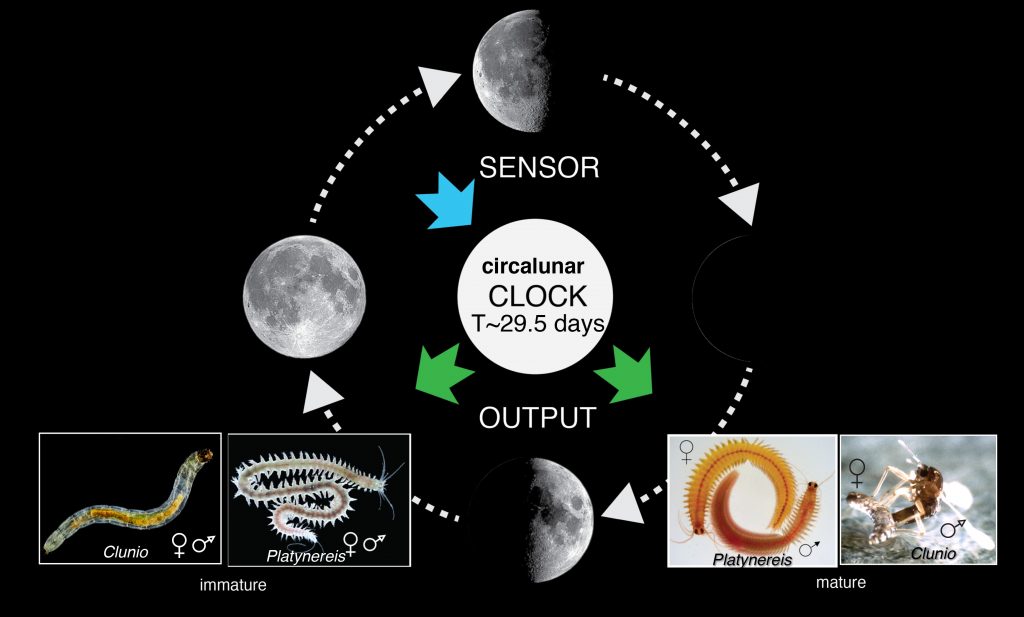Genetic and genomic approaches for the study of daily, monthly and seasonal timing
Kristin Tessmar-Raible
Max F. Perutz Laboratories, Austria
The moon is an important timing cue for numerous marine species, ranging from algae to corals, worms, fishes and turtles. Such lunar timing typically controls the gonadal maturation and behavioral changes associated with reproductive rhythms. Despite the fundamental nature and widespread occurrence of lunar-controlled rhythms and oscillators, little is known about their principle molecular mechanisms, their interplay with rhythms and oscillators of different period lengths, or their modulation in changing environments.
The marine bristle worm Platynereis dumerilii and the midge Clunio marinus harbor light-entrained circadian, as well as a monthly (circalunar), clocks and also exhibit seasonal behaviors. Our work in Platynereis suggests that the circalunar clock persists even when circadian clock oscillations are disrupted.
Conveniently, Platynereis and Clunio can be used for complementary experimental approaches.For Platynereis, we established transient and stable transgenesis, inducible specific cell ablations based on the integration of a nitroreductase-cassette, as well as TALEN/C CRISPR-Cas-mediated genome engineering. Using these techniques on candidate light receptors provides us with insight into solar vs. lunar light detection. While Platynereis is thus an excellent model system for reverse genetics, Clunio lends itself for population and forward genetic approaches. We generated a well-assembled Clunio reference genome, a connected high-resolution genetic map and mapping resources (RAD markers). This genome is not only very compact (86 Mbp) but also displays moderate variability, strongly facilitating sequence-based mapping. Clunio also shows very narrowly timed reproductive peaks. Together, both features have already allowed us to identify and map naturally occurring Clunio timing variants to distinct loci.










You must be logged in to post a comment.